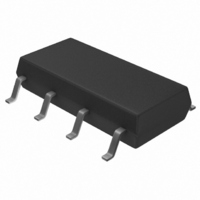IL388T Vishay, IL388T Datasheet

IL388T
Specifications of IL388T
Related parts for IL388T
IL388T Summary of contents
Page 1
... Derate linearly from 25 °C Junction temperature OUTPUT Reverse voltage Power dissipation Derate linearly from 25 °C Junction temperature Document Number: 83625 For technical questions, contact: optocoupler.answers@vishay.com Rev. 1.5, 28-Nov-07 FEATURES • 2.3 mm high SMD package • High sensitivity (K1) at low operating LED 7 ...
Page 2
... Minimum and maximum values were tested requierements. Typical values are characteristics of the device and are the result of engineering evaluations. Typical values are for information only and are not part of the testing requirements. www.vishay.com For technical questions, contact: optocoupler.answers@vishay.com 2 Linear Optocoupler, PCMCIA Package ...
Page 3
... PACKAGE DIMENSIONS in inches (millimeters) Pin One ID 0.230 (5.8) 0.220 (5.6) ISO Method A 0.043 (1.09) 0.033 (0.83) 0.050 (1.25) Typ. i178013 Document Number: 83625 For technical questions, contact: optocoupler.answers@vishay.com Rev. 1.5, 28-Nov-07 MIN. 0.690 0.765 0.851 0.945 1.051 1.169 0.225 (5.7) 0.336 (8.4) ...
Page 4
... The Montreal Protocol (1987) and its London Amendments (1990) intend to severely restrict the use of ODSs and forbid their use within the next ten years. Various national and international initiatives are pressing for an earlier ban on these substances. Vishay Semiconductor GmbH has been able to use its policy of continuous improvements to eliminate the use of ODSs listed in the following documents. ...
Page 5
... Vishay product could result in personal injury or death. Customers using or selling Vishay products not expressly indicated for use in such applications their own risk and agree to fully indemnify and hold Vishay and its distributors harmless from and against any and all claims, liabilities, expenses and damages arising or resulting in connection with such use or sale, including attorneys fees, even if such claim alleges that Vishay or its distributor was negligent regarding the design or manufacture of the part ...






